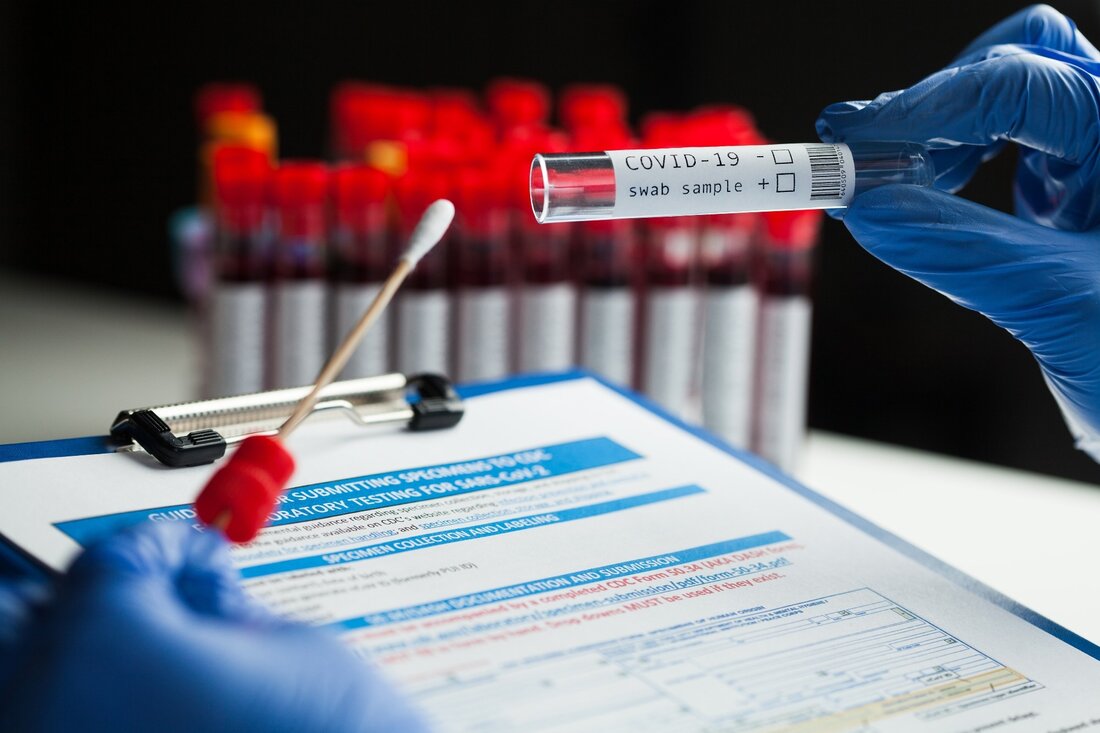Global study shows discrepancy between COVID-19 treatment guidelines and WHO standards
Learn the discrepancy between COVID-19 treatment guidelines and WHO standards in a global study. Differences and effects in focus.

Global study shows discrepancy between COVID-19 treatment guidelines and WHO standards
In a study recently published in the journalBMJ Global HealthResearchers are comparing coronavirus disease 2019 (COVID-19) treatment guidelines with those published by the World Health Organization (WHO) in different member states.
Global differences in dealing with COVID-19
Since the start of the COVID-19 pandemic, the therapeutic landscape has changed dramatically, with increasing vaccination coverage, more frequent infections and a reduction in pathogenicity due to virus evolution.
However, the poorest countries have often felt the worst social and economic consequences of the pandemic. Differences in treatment recommendations between countries have not been publicly measured or thoroughly studied, and there is uneven delivery of effective vaccines and medicines.
About the study
In the present study, researchers conducted a retrospective analysis of each country's guidelines (NGs) for severe acute respiratory syndrome coronavirus 2 (SARS-CoV-2) infection therapy using the Reporting Checklist for Public Versions of Guidelines (RIGHT-PVG) survey checklist and a developed comparison metric based on WHO standards.
Between September and November 2022, data was analyzed for guidance compiled by ministries of health, national infectious disease websites, the COVID-19 Clinical Research Coalition, and key pollsters and leaders. The most recent national guidelines on SARS-CoV-2 infection therapy were stratified by severity, eliminating local or regional hospital guidelines, vaccination guidelines, infection control measures, and those without pharmacological recommendations. All information on COVID-19 complications such as bacterial pneumonia and thrombosis has been removed from the guidelines.
Eight physicians and one clinical nurse extracted information including publication dates, language, body, disease severity, prescribed medications, approval status, and approval data collected from national-level authorities. Antibiotic suggestions were omitted unless they were intended for SARS-CoV-2 infection.
Countries were divided into five areas based on the WHO classification, including the European Region (EUR), the African Region (AFR), the Southeast Asian Region (SEAR), the Americas Region (AMR), the Western Pacific and the Eastern Mediterranean Region (EMR). Data on treatment recommendations from relevant health authorities in each country were obtained and analyzed.
Consistency between the national recommendations and the 11th edition of the WHO recommendations was determined. To this end, positive numerical weights were assigned to suggestions that met the WHO criteria, while negative weights were assigned to those suggestions that discouraged it or did not contain evidence-based advice. The final result reflected the country's adherence to WHO recommendations.
Treatment suggestions and disease severity categories were assessed using the gross domestic product (GDP) per capita, the Human Development Index, and the World Bank Global Health Security Index.
Study results
Guidance on the treatment of COVID-19 was obtained from 109 WHO member countries and showed significant variation in recommendations and disease severity categories. The therapeutic advice of some NGs differed significantly from WHO recommendations. At the end of 2022, 93% of national guidelines recommended one or more drugs that failed randomized trials and were not approved by WHO.
Despite strong evidence of treatment benefit, approximately 10% of NGs did not recommend corticosteroids for severe disease. Strategically by annual GDP, Human Development Index (HDI) and Global Health Security Index (GHS), NGs from low-resource countries had the largest gap.
The average population of countries with acquired recommendations was 14 million, with 70% of the guidelines implemented in EUR, followed by the AFR at 53%. Furthermore, 65% of the guidelines were published six months before the WHO protocols, with 31% issued or revised during the same period.
Approximately 84% of recommendations did not describe COVID-19 severity according to WHO definitions, with only 9.2% of guidelines including severity criteria consistent with WHO. The range of therapies included in the recommendations ranged from one to 22, with the median being five, regardless of severity. In comparison, the WHO guidelines prescribe ten medications.
At the end of 2022, several NGs continued to endorse drugs that the WHO had previously warned against, with some regional differences. In total, 105 NGs recommended at least one WHO-approved therapy, with 71% of medications appropriate for the severity of SARS-CoV-2 infection.
Corticosteroids were the most commonly recommended medication, with 92% of NGs using these therapeutics and 80% reporting that they used them for the same disease severity as WHO. Additionally, 23% and 79% of the 72 NGs recommended remdesivir and tocilizumab, respectively, for mild COVID-19.
Conclusions
Based on the study results, COVID-19 has resulted in significant variation in NG recommendations, with many advocating inefficient, costly, and inaccessible remedies, particularly in resource-poor areas.
The study results highlight the importance of formalizing methods for generating NGs for infectious diseases to ensure their development based on the best available data. The recommendations made by the NGs varied widely. Some of these had no national guidelines, omitted WHO-recommended medications, suggested untested medications, or used different classifications of the severity of SARS-CoV-2 infection.
Sources:
- Cokljat, M., Cruz, C. V., Carrara, V. I., et al. (2024). Comparison of WHO versus national COVID-19 therapeutic guidelines across the world: not exactly a perfect match. BMJ Global Health. doi:10.1136/bmjgh-2023-014188

 Suche
Suche
 Mein Konto
Mein Konto
